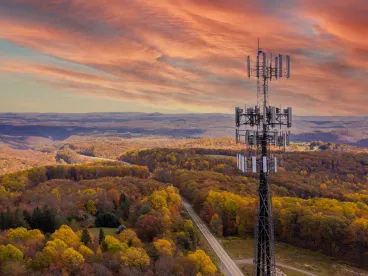The Treasury Department has released the final version of important compliance guidance applicable to broadband projects funded through SLFRF or CPF awards. The “SLFRF and CPF Supplemental Broadband Guidance” (“Guidance”) addresses several crucial issues relating to the use of SLFRF and CPF funds for broadband projects, including the crucial distinction of ISPs acting as “contractors” vs. “subrecipients,” the treatment of “program income,” the scope of the Federal interest in grant-funded property, procurement requirements, and other issues.
The final Guidance includes several notable and very helpful modifications to the draft version issued by Treasury in late March. On March 30, we published a blog post analyzing the draft guidance in detail. Today’s blog post focuses only on the changes adopted as part of the final Guidance; for a more complete picture of the overall Guidance, readers should refer to our March 30 blog post and to the Guidance document itself.
Key changes adopted in final Guidance:
-
Broadened definition of “ISP”:
The proposed Guidance relied entirely on the term “ISP,” without qualification, definition, or elaboration. Broadband projects, however, often involve entities that build, own, or operate networks, but that may not provide retail ISP service. By relying on the term “ISP,” Treasury risked excluding a significant portion of CPF and SLFRF broadband grant recipients from the Guidance simply because retail ISP service is provided through an ISP affiliate, an ISP partner, or some other entity.
Treasury received comments pointing this out and directly addressed it as part of the final Guidance. The final Guidance still uses the term “ISP,” but includes the following key sentence: “For purposes of this guidance, the term ‘ISP’ includes subrecipients and contractors installing broadband infrastructure using SLFRF and CPF funds, and is not limited to entities that provide retail Internet access service.”
-
Revenue from fiber IRUs and leases is not “program income”:
The proposed Guidance stated that income generated by ISPs from subawards would not be considered program income and that subrecipient ISPs may use such income without restriction. In the case of ISPs treated as contractors, recipients “may agree to permit” such ISPs to retain program income (subject to certain requirements).
But the proposed Guidance did not address the treatment of income derived from leases or IRUs, which can be an important component of SLFRF and CPF broadband projects. The final Guidance squarely addresses the issue: “Treasury clarifies that income from indefeasible rights of use (IRUs) and leases relating to broadband infrastructure will not be considered program income.”
-
A “fixed amount subaward” can include an award involving a cost-sharing or match requirement, or where the recipient requires the ISP to submit evidence of costs:
As a side effect of statutory requirements within the Uniform Guidance (2 CFR Part 200), the Treasury relies heavily on the concept of a “fixed amount subaward.” Subawards that are not “fixed amount subawards” will not qualify for some of the compliance- and procurement-related benefits established in the Guidance. In the proposed Guidance, Treasury did not address whether a cost-sharing or match requirement, or cost-based subaward, could qualify as a “fixed amount subaward.”
In the final Guidance, Treasury adopts a broad interpretation of “fixed amount subaward,” so that it may include subawards that include a cost-based component or a match requirement. The final Guidance states: “Treasury further clarifies that a subaward that otherwise meets the requirements of 2 CFR 200.201(b) may be considered a fixed amount subaward even if: 1) the recipient uses its discretion to impose a cost-sharing or match requirement on the subrecipient; or 2) the recipient requires ISPs to submit evidence of costs. More specifically, subawards that provide for a maximum payment amount that is calculated based on a reasonable estimate of actual cost (see 2 CFR 200.201(b)(1)) will be considered fixed amount subawards even if the subaward agreement also provides that payments to the ISP subrecipient will be limited to actual costs after review of evidence of costs.”
-
Prior incurred costs may be reimbursable:
The final Guidance clarifies that costs incurred by an ISP prior to receiving an award “are reimbursable to the extent that they would have been allowable if incurred after the date of the federal award or subaward (for example, if an ISP purchased fiber or other broadband equipment in advance of being awarded a subaward or contract).”
-
Retroactive application:
The final Guidance clarifies that it applies retroactively. It applies “to broadband infrastructure contracts and subawards funded by SLFRF and CPF for states, territories, freely associated states, and local governments, including those entered into prior to the release of this guidance.”




 />i
/>i

